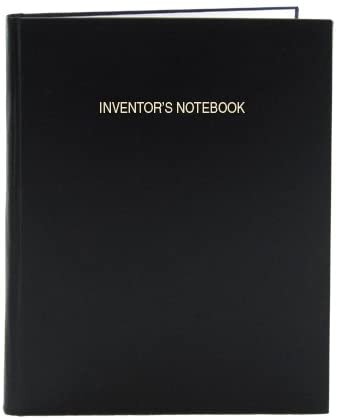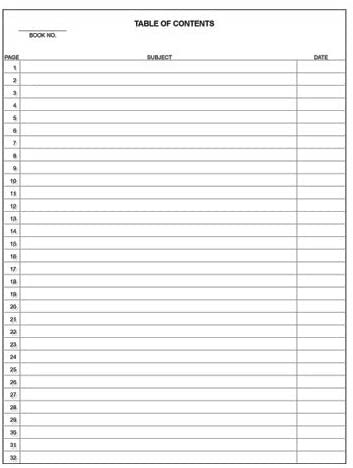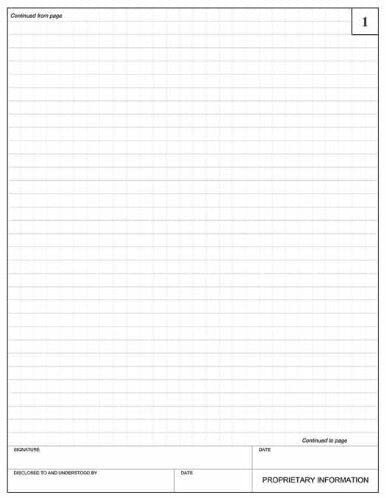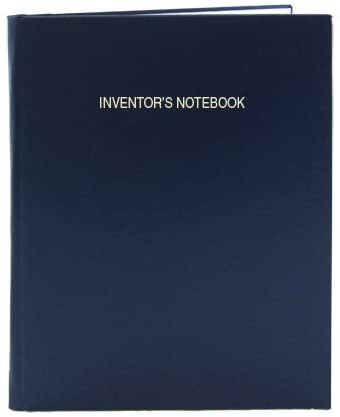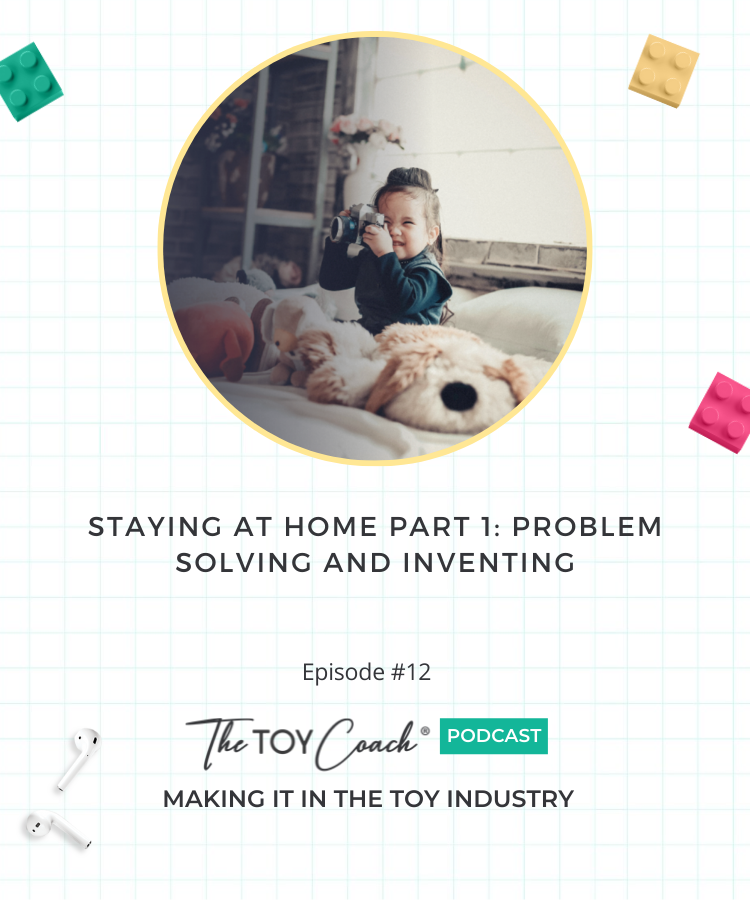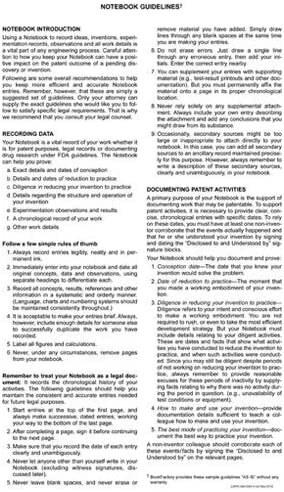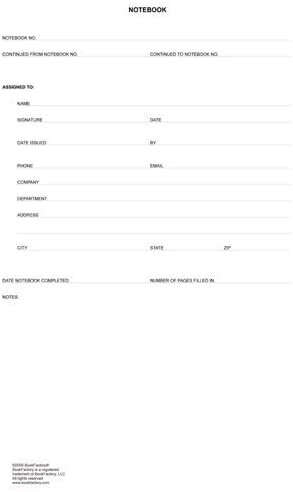Episode #12: Staying At Home Part 1 Problem Solving And Inventing
Listen Now
Tap Play Below or Listen On iTunes | Spotify | Google Podcasts
With 42 states practicing either partial or statewide stay at home orders, our lives are looking very different than they were just a few weeks ago. We're spending a lot of time at home, and attempting to use technology to maintain our relationships and workplace productivity. All this change makes it the best and worst time to innovate, all at once.
This episode is Part 1 of a 2 part series aimed at guiding inventors on how to nurture their creativity and develop their ideas while stuck at home. Learn by example how to analyze the current day to day struggles that parents, teachers and even kids are facing, and identify potential opportunities for new toy or game inventions. Learn what an Inventors Notebook is and HOW to keep one as a legal record. Additionally, learn how to use an Inventors Notebook to develop your small ideas into big inventions.
Ready to listen? Pop in your earbuds and hit play above, or scroll down and keep reading.
HOW TO INVENT A TOY WHEN YOU’RE STUCK AT HOME
Inventing a new toy idea can be a lot of fun, but what happens when you can’t get outside your home for inspiration? Depending on why you’re stuck at home, whether its because of a worldwide pandemic like the coronavirus, or you’re just having a voluntary creative hermit weekend, you can still find ways to draw inspiration.
For a start, take in the changes around you. Inspiration for inventing a new toy can come from the current state of the world. If you can’t get out to a store to analyze your competition and perform a SWOT analysis, you can always read the news. While reading the news can seem like no fun, what you’ll identify from reading the news is how the world is changing. Recognizing the NEW problems of today will tell you exactly what to invent for the future.
Inventing a toy can be as simple as identifying the opportunity to solve a new problem created due to quarantine.
HOW TO KEEP AN INVENTORS NOTEBOOK
An inventors notebook is typically a bound notebook that if systematically organized, and maintained properly, could provide legal protection in the case a patent filing is challenged. If you intend to keep this book as a legal record, then there are additional guidelines you’ll want to follow.
-
This episode is brought to you by thetoycoach.com
Get Your Own Inventors Notebook by Clicking Here.
Get Your Own Idea Journal (not sufficient for legal use but a great way to explore and expand on your idea) by Clicking Here.
-
Azhelle (00:00): You are listening to making it in the toy industry. Episode number 12 Info/Outro + Jingle (00:06): Welcome to making it in the toy industry podcast for inventors, entrepreneurs like you and now your host Azhelle Wade. Azhelle (00:17): Hey there, toy people, Azhelle Wade here and welcome back to another episode of the making it in the toy industry. This is a weekly podcast brought to you by the toy coach.com with so many of us quarantined at home, our days are looking a whole lot different than they did just a few weeks ago with little thought. We problem solve and invent ways to improve our new stay at home lifestyles. If you're working from home, you've probably found solutions to improve productivity within your home office space. If you have kids, for example, you're watching them play and learn and grow 24 seven and I'd be surprised if you didn't have a new toy or game idea popping into your head from time to time, but these ideas that pop into your head while you're figuring out your new normal are usually brushed off as fleeting thoughts. But my friend, I want to tell you not to ignore what appears to be just low hanging fruit. Azhelle (01:23):
Don't tell yourself that you don't have the time or the means to develop these ideas because you do. Okay. So with 316 million people in at least 42 States under either a partial or full state directive to stay at home, social media is on overdrive. What this means is that content is flying at us from every direction in every form, blog posts, workout videos, inspirational coaches, new music, bad news, good news, the whole gamut. And the first step to coming up with any new idea is to consume content. And I'm sure if even just a little, you've been doing just that. So what do we do now? Well, now is the time when you need to pull yourself away from social media, away from TV and radio and even books and start creating. Start writing down those little ideas that you have from time to time, all those things you thought were fleeting thoughts and give them your full creative attention.
Azhelle (02:32): So today's episode is going to be part one of a two part series and in this series I want to talk about the best ways to nurture creativity when you're stuck at home. We are going to talk about one how to find inspiration in isolation to how to create and maintain an inventor's notebook. Three how to make a game of brainstorming your and developing it and for play testing and vetting your concept from home. By the end of this two part series, you are going to be able to transform what seems like a drizzle of inspiration and turn it into a full on creative tidal wave. Okay, so let's get started and dive into how to find inspiration in isolation because of the state home orders issued during the coronavirus pandemic. Many of us are experiencing isolation, whether we're at home alone or with family or friends, but because of this change to our everyday lives, we are all going through experiences that we haven't never had before and thus we are identifying problems that we may have never even noticed before if we were not at home day in and day out.Azhelle (03:53): At the same time, we aren't going to work. We aren't running errands. We're saving hours and hours of time commuting where we were rushing from one activity to the next. This is giving us much more time to spend thinking and much more mental bandwidth in which to do it. So we're not only seeing flaws in the way we live our lives now, but we're seeing flaws with how we live them before and naturally like any good inventor, we're coming up with solutions now. They might be small ideas. Just quick thoughts like what if this was automatic? What if that were clear? What if this was easier to see? And now all we need to do is take the time to explore those. What F's? Chances are you've already had a new toy or game idea while you've been home, but you didn't realize how big of an idea it is or could be. Azhelle (04:48): Now, I'm sure you've all heard of the college student who made a face mask designed specifically for the deaf and hard of hearing community. Her name is Ashley Lawrence, a college senior from Eastern Kentucky university. She majors in deaf education and she had the simple idea, which she may have never realized it was needed if not for this pandemic and it's a simple solution that could have easily been overlooked and not developed. All right, so I know we are designing toys and games. We are not designing surgical equipment, but still let's think. What are some things that your experiencing for the first time perhaps with your kids or if you don't have kids, what are you hearing that parents are experiencing for the first time due to this change? So take the problems and difficulties that we are experiencing day to day right now, every single day as if it's the new normal and imagine if this were the new normal, what are we missing out on that could make life a little bit easier, a little bit better? Azhelle (05:55):Is it as simple as a subscription play box or is it a musical hygiene sink attachment? What toy invention or game idea could become essential to every American home where mom and dad are also teacher and CEO? What kinds of toys do the children of today's multitasking and anxious parents really need? Look because of Coronavirus, life as we know it has changed. The wheel is broken and it's time we re invent it. So next I want to dive in to a few scenarios. We are, we're going to explore a few of the different struggles that you might be experiencing while on stay at home order. And I'm going to show you by example how to find inspiration in that isolation. So how are we going to do that? I am going to talk you through five scenarios and we'll talk about the difficulties they bring and explore some creative ideas on how an invention of a toy or a game could improve upon that. Azhelle (07:00): My goal here is just to inspire you to realize that today's challenges are making way for the inventions of tomorrow. So to start off, our first scenario is for all of the parents out there, you are spending each and every day at home with your kids. And because of this homeschooling has suddenly become the new norm across the country. As you've been learning to teach your kids, you might have also noticed room for improvement in the methods used to teach them. Perhaps watching your kids transition from classroom worksheet to craft time bridges a gap and inspires you to come up with a way to combine certain craft materials into class time worksheets. Maybe you've had a fleeting thought for the design of an educational card game re-imagined school supplies or even a design for fold-up desk. Could you make a game out of education or could you make a toy that helps kids refocus when they get distracted during homeschool activities? Azhelle (08:04):The second scenario I want to focus on is also around parents and children, but that might be experiencing a different struggle. So let's say pre Corona virus, you were apparent who typically arrived home just after bedtime and now you have the luxury of being with your child and your whole family all day long. But because of that you're for the first time discovering how difficult it is to get your kid to go to sleep. Maybe finding the balance between a nightlight setting that's too bright for sleep and not bright enough or comfort is just a losing battle that inspires you to invent a new kind of sleep comfort plush. The third scenario I want to talk to you about revolves around birthdays and celebrations. Have you had someone's birthday pass in the past three weeks and been unable to celebrate with them? Well, I have two and it's now is just such a hard time to celebrate with your loved ones because the best you can do is wish them a happy birthday with a planned video call and sometimes that just doesn't feel like enough. Azhelle (09:13): So maybe there's an opportunity here to develop something that can enhance virtual birthday celebrations. Maybe it's a product that can travel in the mail and arrive with a card or a QR code inviting someone to a surprise party video call and inside that package there might also be a surprise gift that maybe can't be opened until the surprise party video call is joined. And just imagine if joining could activate a linked celebration on both ends of the screen. Now, scenario four is true for all of us who are not essential workers. We are now doing everything from home. This is the biggest and almost obvious scenario that we're all likely dealing with. But let's talk about what makes it so difficult to continue doing everything at home, day in and day out. And let's see what kind of inventions that difficulty can inspire from our homes alongside friends or family.Azhelle (10:20): We are working, exercising, cooking, cleaning, inventing, and spending time with our family all in the same place. And what tools do we have to help us do this? While we have video calls for work, we have board games for our family and when it comes to exercise, we have YouTube videos or video call classes. All of these tools technically and physically do help us get more done from home more efficiently. But I believe as time goes on, we're going to need more than that. And here's why. Now I'm a person who enjoys doing yoga from home, but when I first moved my yoga practice home, and this was years before the pandemic, I realized immediately that something was missing. So at first I thought the problem was with the yoga videos that I chose. So I switched videos, but that wasn't it. So then I thought the problem was the energy of the people that I was missing being around. Azhelle (11:18): And I was convinced that I couldn't have that same experience without them. So I tried a new class to get around people, but it's, it wasn't that there still was something missing. So I tried and tried a few other variations and eventually realized that the problem was my mindset and what was affecting my mindset was the ambiance of my physical space. So I had to do things like lower the lights and have incense dark on my TV, lower the volume on the videos. And suddenly I found that piece and that focus that I'd been trying to recreate from previous classes. So back to what I said earlier, if this is our new normal, even for just a month more, we should consider ambience as something to innovate. Even one stay at homes are lifted. It's likely that some people are just going to feel safer staying at home more often than they did before. Azhelle (12:10):So we should think about this. Can we create toys or games that alter the ambience of our user's homes? Maybe their bedrooms may be even their bathrooms. What can we invent that can easily change the environment of a space that we're limited to? How can we help kids and their parents travel to another mental space within the safety of their own home? Imagine toy products that project lights and shapes and sense and sound all in an effort to change the atmosphere in which we perform our daily activities. And the final scenario I want to discuss is all about the difficulty of staying connected to friends and family. So let's assume that you're in a situation where you live alone and you have no family or friends nearby. So connecting with your family or friends in creative ways that don't involve checking your phone could become increasingly important to you. Azhelle (13:12): Now, why is that? Why do I say that? Well, think about it. With everyone working from home, the line dividing work and personal time is getting seriously blurred. You may, you may reach for your phone with the intention to call your mom one evening only to see a message from your boss asking what your last email meant and if you could respond ASAP. So a solution to this new problem is to think about toys or games or products that can connect us with our families when they're far from us and can't visit. Now, a great example of this, one of my favorite products is loved box. And the concept of it is, is sure to inspire a few new ideas for you. So love box is a modern day love note messenger. It's a small wooden box that accepts messages via a connected app. When when a friend or family member sends you a message, the physical heart on the front of the wooden box spins and spins until you open the box and read the message. Azhelle (14:14):So seeing that little heart spin gives the owner of the box so much joy because even before reading the message, they know that someone just thought of them. Concepts like love box help connect the technology that we use every day to the physical spaces of the people that we love. And those are the kinds of inventions that we really need right now. Inventions that reinvent how we give love and affection when we can't physically be with those that we care about. Now look, I know inventing something new can be really intimidating, but that's not your only option. Well, we also need is not just traditional invention, but also re-invention. Now is the best time to find new ways to do the things we used to love doing outside and in person. Great inventions inspired by this time are going to answer one question. How do we keep doing the things we always did when we can't be together in the ways we always were? Azhelle (15:21): So the point I want to get across here is don't brush off any quick thoughts that come to you while you're staying at home. Don't think that they're just low hanging fruit because when do you ever spend this much time mulling over the same ideas, experiencing the same problems over and over again? Never. That's the answer. Never. So this quote unquote low hanging fruit isn't as obvious as you might think. It's coming to you because you're spending time doing the same actions over and over again, trying to do old things in new ways and having to think about them in ways you've never had to before. So write these ideas down. So now that we're talking about writing down all of those great little ideas you might have, I want to get into keeping an inventors notebook to record all of your moments of inspiration. As you may have surmised from the name and inventors notebook is where any good inventor keeps dated. Azhelle (16:18):Notes and sketches of all of their amazing ideas and inventors notebook is typically a bound notebook that if systematically organized and maintained properly could provide legal protection. In the case, a patent filing is challenged. But in 2013 the Leahy, Smith America invents act was passed, which actually changed the U S patent system from a first to invent system to a first inventor to file system, essentially eliminating any interference proceedings in which patents could be challenged. If another inventor wanted to prove that they came up with the idea first and one of the methods of proof that used to be used in those proceedings. Yep. You've guessed it was an inventor's notebook. So given the passage of a I a and in vendor's notebook won't likely hold the same legal weight at once did. However, it can still be a great tool for recording your ideas, organizing them and building upon them. Azhelle (17:24): So while a traditional inventor's notebook may be of little use these days, I would still suggest keeping a record of all of your ideas and in the form of a notebook is great cause you can keep record of how these ideas evolve over time. So in my mind this is more of an exercise in creative development because getting your thoughts out on paper is going to allow you to evolve them a bit faster, easier than if you just let them swirl around in your mind. So I would still encourage you to keep an inventor's notebook to record all of your ideas. And when you do so I'm going to recommend that you record the following information on every page you're going to need the date, the working title of the toy or game doesn't have to be good, just has to be recognizable as the idea's name, the idea for the toy or game. Azhelle (18:15): And then you're going to answer three major questions. What, how and why. So the what is, what gave you the idea, the how is how it works and the why is why you think it's better than an existing toy or game. And if there's nothing existing, why you think it's needed. From there, you should continue adding to the page as your idea grows, sketches, diagrams, notes, anything. Just to continue building on your idea inside of this notebook until a finished product evolves or an entirely new invention is inspired. Now, if you intend to keep this book as a legal record, if that's your goal and you insist that this book has to be able to hold up during legal proceedings, then there are a few additional guidelines that you're going to want to follow. The book's pages must be permanently bound so they can't be removed or added without detection. Azhelle (19:15): The pages all must be numbered. Ideally, you should be keeping a separate inventors notebook per invention. You'll also need photos or sketches of the invention inside the book. You'll need to document, play tests and conclude findings during those tests. You'll need to list any similar product to yours and you'll also need to add in any communication you did with others regarding the invention. You will also add purchase receipts for any materials that you bought to create prototypes or mock ups of your invention. And finally and most importantly for legal record, you as the inventor need to sign and date every page as you enter new information, but you also need a witness who fully understands your invention to sign and date the page as well along with the words witnessed and understood and this witness can't be a co-inventor of the product. Now again, I have to say from my research conducted around us patent law, it appears that the AIA passed in 2013 really changed. Azhelle (20:25): The U S is patenting system from a first to invent system to a first to file system, which means that these inventors books may not be of a much use anymore, but if you insist on maintaining an inventors book that could hold up in a court of law, you do need to follow the additional guidelines I just mentioned. So if you're looking for an inventor's notebook that follows these guidelines, head over to the toy coach.com I've already done the research for you and I'm going to supply you with a few direct links so you can get the kind of book that will best record your idea and help protect the date it was invented. So to get those links for the recommended inventor notebooks, head over to the toy coach.com forward slash podcast forward slash 12 so there you have it. This was part one of the two part series focusing on how to nurture your creativity when you are stuck at home. Azhelle (21:25): Today we covered how to find inspiration in isolation by problem solving and exploring specific day to day scenarios you might be currently experiencing. And we learned all about what an inventor's notebook is and how you can use it to develop your ideas or as a legal document to record your inventions. Next week we'll pick right back up where we left off and I'll show you how to make a game of brainstorming your idea and developing it further. And finally, how to cleverly play test and vet your toy or game concept from home. Okay, toy people. I hope this episode inspired you to find ways to take those little bits of genius that pop into your mind while you're at home and build them into some great inventions. I want to take a moment and personally thank you for listening to making it in the toy industry. Before you go, please leave us a review on iTunes. I really love hearing your feedback. You can also email me directly at info@thetoycoach.com if you have any episode topic requests. I am always here to listen. Please continue to stay home and stay healthy and until next week I'll see you later. Toy people.Info/Outro + Jingle (22:51):Thanks for listening to making it in the toy industry podcast with Azhelle Wade. Head over to thetoycoach.com for more information, tips, and advice.
-
🎓Learn more about how you can develop and pitch your toy idea with Toy Creators Academy® by clicking here to visit toycreatorsacademy.com and join the waitlist.
Legal Record Guidelines
Pages must be permanently bound, so pages cant be removed or added without detection.
Pages must be numbered.
Ideally, you should be keeping a separate book per invention.
Photos or sketches of the invention.
Document focus groups, or playtest sessions and summarize findings.
List any similar products to yours.
Add in any communication you did with others regarding the invention and purchase receipts for any materials you bought to create prototypes or mock-ups of your invention.
Finally and most importantly, you as the inventor need to sign and date every page as you enter new information. But you also need a witness, who fully understands your invention to sign and date the page as well along with the words Witnessed and Understood. And this witness cannot be a co-inventor of the product.
